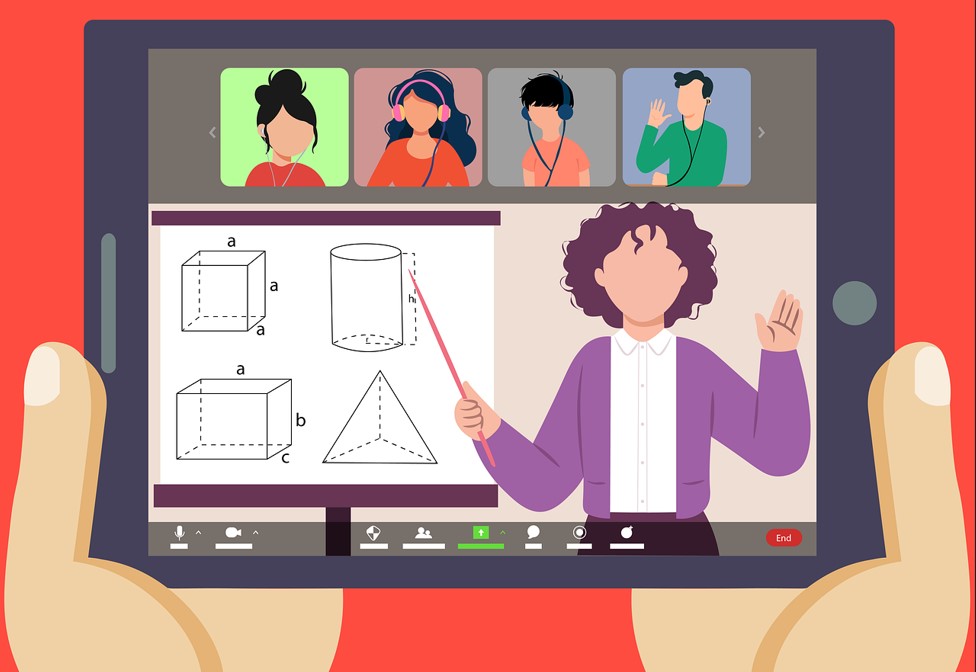Virtual Learning: 3 Strategies for Student Success
A virtual learning environment should include three key components to be successful

The pandemic turned the brick-and-mortar model of teaching and learning on its head. Before March 2020, credit recovery, remediation, and advanced coursework were the main reasons for virtual learning in K-12. However, when schools shifted to emergency remote learning, students and educators experienced teaching and learning in which video conferencing, online assessments, virtual tutoring sessions, and online classrooms became the new normal.
Although districts have since returned to in-person learning, virtual learning options continue to grow, with hybrid options proving to be effective in certain situations. According to a recent whitepaper from Edmentum, “There has never been a more critical time to explore the role virtual learning can play in educating our children. Districts are grappling with a student mental health crisis, learning loss spread unevenly within and across schools, and unprecedented burnout among teachers – all while feeling the pressure to prepare students for a rapidly changing and uncertain future.”
While technology is critical to supporting students in any learning environment, the optimal solution for student success in a virtual learning environment should include three key components:
- Establishing a community of learners.
- Implementing high-quality virtual pedagogy.
- Ensuring equity for all students.
1. Virtual Learning: Establishing a Community of Learners
Relationships matter in education. "Our brains have evolved to thrive in communities and relationships. As a result, the ‘social brain’ is a powerful learning mechanism where students thrive academically, socially, and emotionally,” says Dr. Melina Uncapher, lead program director at the Advanced Education Research and Development Fund.
A key component to engaging students' social brains in a hybrid or virtual learning environment is creating a community of learners that includes teachers, mentors, and parents/guardians. Teachers developing deep relationships with their students create powerful learning experiences and opportunities for students to engage and connect to their learning. Mentorship programs pair a student with an adult who can monitor progress, resolve issues, and support the student’s emotional and educational needs.
Family support is critical in virtual learning. According to one study of remote learning during the COVID-19 pandemic, many parents/guardians reported that they were given the opportunity to better understand their child’s learning style, needs, or curriculum. After all, they are responsible for the at-home learning environment and need to work with teachers to set goals and reinforce concepts.
2. Implementing High-Quality Virtual Pedagogy
“Teaching effectively in virtual environments is different,” says Liz Lee, director of online learning at the International Society for Technology in Education (ISTE). Some instructional strategies transfer to online learning, such as discussions, small group work, self-directed learning, and collaboration; however, teaching in virtual classrooms has nuances. For example, effective online pedagogy emphasizes student-centered learning and engages active learning activities.
Tools and ideas to transform education. Sign up below.
While well-designed technology is a critical enabler of hybrid and virtual learning, high-quality online instruction and a well-designed curriculum are crucial to students' success in virtual programs. Therefore, virtual schools should focus on targeted professional development for educators aligned with the four online teaching competencies to ensure that online instruction is not just replicating in-person instruction. These include: amplified communication skills; strong time management skills; focused planning time; and the ability to adapt content and instruction to meet the needs of students with learning difficulties.
In addition, a well-designed curriculum that fosters student learning and interaction by aligning objectives, assessments, and instructional strategies is just as critical to virtual pedagogy.
3. Ensuring Equity for All Students
Flexibility, reduced distractions, exploration of interest, and personalized learning have been significant reasons why many students and families have chosen hybrid or virtual learning as their educational choice. This population includes students with disabilities, historically marginalized students, and students disenfranchised by the brick-and-mortar style of education. Virtual learning programs understand this and support all students through systems and practices that ensure all students have access to their learning, engage with the content, and thrive in an online environment.
Virtual learning programs should consider three key equity areas: technology, academic and mental wellness, and accessibility. First, students should have easy access to virtual learning experiences, including sufficient bandwidth and a device capable of supporting online learning. Second, digital learning coaches, support staff, and families must understand the needs and struggles of each student to ensure that the student is engaged and connected to their learning. Lastly, providing accessibility tools allows students to focus on learning and levels the playing field to access their education.
As virtual programs and schools continue to grow, it is essential to remember that it takes a team who is committed to their students, understands their needs and personalities, and takes the time to develop high-quality programs.
According to Holly Brzycki (CAOLA), “It is critical for successful district virtual programs to have a person who oversees the program, identifies opportunities to improve communication with and supports parents and other stakeholders, and ensures that students and educators have the resources they require to be successful.”
